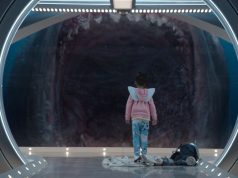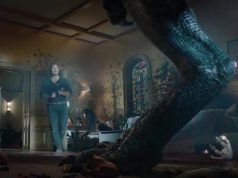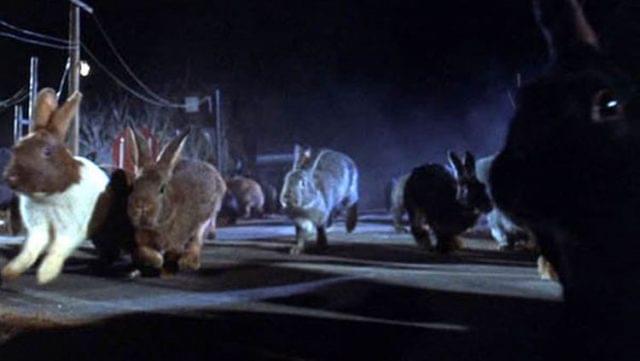
Ever since someone figured out that small things could be made to appear large by putting them closer to the camera, movies have featured giant animals. Audiences can’t get enough of oversized beasts wreaking havoc, whether it’s King Kong, Godzilla, or Chris Farley. But one must be reasonable about this. One cannot make a movie about, say, giant rabbits and expect to be taken seriously, especially if one cannot afford the special effects necessary to make it convincing.
And yet, someone did make a movie about giant rabbits. What’s more, it was based on a novel! An actual book, printed on paper and sold in stores! The book was called “The Year of the Angry Rabbit,” and I’m not making that up. The movie came to be called “Night of the Lepus.” Easily the best thing about it is that it’s based on a book called “The Year of the Angry Rabbit.”
Like all of the greatest films in the canon, “Night of the Lepus” begins with a boring newscaster giving us a lecture on the movie’s subject. What better way to grab the audience’s attention immediately than with dour intonations? “Rabbits — which can be so cuddly as pets — can become a menace,” the newscaster says, the first of several thousand lines of dialogue intended to convince us that bunnies are scary. The way rabbits become a menace is that they reproduce very quickly, and if there aren’t enough natural predators in the area to keep them in check they will become so numerous that they devastate the local ecology. The same is true of Jonas Brothers.
A surplus of rabbits is what has happened in a hot, dusty section of Arizona, where the film is set. (To get a realistic feel, the film was shot on Mercury.) A rancher named Cole Hillman (Rory Calhoun) is out riding his horse one day when it trips over a rabbit hole, breaks its leg, and must be shot. Or at least that’s what Cole tells everyone. We saw what happened, though — that horse tripped over nothing, and its legs were fine. And you think: If this film can’t even handle a simple effect like making a horse look injured, how is it going to manage giant killer rabbits?
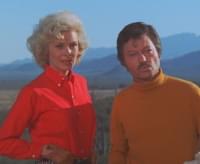
But first things first. Cole has HAD it with these motherscratching rabbits on his motherscratching ranch, digging holes and making babies and delivering Easter candy and tormenting speech-impeded hunters, so he goes to a nearby university to ask the college president for help. When your ranch is plagued with an abundance of rabbits, what you need is an education administrator. This particular academician, named Elgin, is played by DeForest Kelley, better known as the guy who used to appear at sci-fi conventions because he used to play Dr. McCoy on “Star Trek.” Elgin doesn’t tell Cole that he’s a university president, dammit, not a scientist, but he does put him in touch with some people who are scientists, a married couple in town studying bats. Bats, rabbits, they’re all the same.
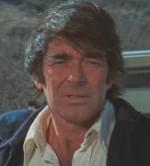
The husband-and-wife scientists are named Roy and Gerry. Gerry is played by Janet Leigh, who was famously stabbed to death in the shower, and who also starred in “Psycho.” Roy is played by Stuart Whitman, whose work I’m unfamiliar with but who seems quite capable, at least in this instance, of playing a pompous, know-it-all scientist. The pompous, know-it-all scientist is a key figure in movies about nature running amok. It is usually the scientist’s fault that amok is how nature has run, but he uses his powers of self-importance and pretension to make it sound like he is a noble seeker of truth who will save us from the problem, making us forget that he’s the one who caused it in the first place.
Cole wants Roy and Gerry to find a humane way to get rid of the rabbits, if possible, so they catch a few of them and run some experiments, basically to see what will happen. (In the ’70s, no one cared what you did to animals. An average day would find your typical scientist jabbing the eyes out of three or four monkeys before lunchtime.) Roy’s plan is to mess with the bunnies’ hormones so they’ll quit being so dang horny all the time. Somehow he thinks he can produce this effect with a serum, and that when the rabbits he gives it to are released back into the wild they will transmit it to the other rabbits — you know, like when you get a vaccination and then everyone you come in contact with also becomes immunized. Makes perfect sense.
One of the rabbits injected with the stuff gets loose and hightails it back to the warren before Roy has figured out what effect it will have. Turns out instead of lowering the rabbits’ libidos, it makes the rabbits grow to a hundred times their normal size, leaving their libidos the same, maybe even increased. So now the landscape isn’t just plagued with thousands of rabbits; it’s plagued with thousands of giant rabbits. Roy couldn’t have failed more at this if he’d been trying to.
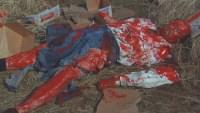
Oh, and then his and Gerry’s little girl, Amanda (Melanie Fullerton), a cute, towheaded tyke, is the first person to stumble across the corpse of someone who has been mauled to death by a rabbit, with the bloodstained bunny still on the scene, ketchup-y gore dripping from its adorable buck teeth. I like this scene. I am in favor of the traumatization of children, both in cinema and in life, and I like seeing Roy compound his failure as a scientist by failing as a parent, too. But I don’t know where Gerry is during all this. Probably back at the lab, shooting rats with darts.
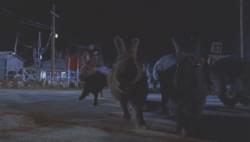
It is here that we come to the portion of the film known as Forty Minutes of Random People Being Killed by Rabbits. It is not nearly as interesting as it sounds. For the most part, the director, a veteran of TV and Westerns named William F. Claxton, conveys “scariness” simply by photographing the rabbits in slow-motion or in tight closeup, which merely has the effect of making them seem sluggish and nearby. They are ordinary rabbits, of course, hopping next to miniature houses and cars and stuff. In the shots where a rabbit and a person would need to appear together — for instance, when a rabbit is attacking a person — Claxton generally refuses to do it. Instead he cuts back and forth between rabbit and human, hoping that the ancient art of film editing will create the illusion of the bunny and person being in the same room at the same time. When it’s absolutely necessary, he puts a guy in a big rabbit costume, which is about as convincing as it sounds like it would be, possibly less.

The townspeople try to kill the mutant rabbits with dynamite, but this only makes them (the rabbits) angrier. Finally they (the townspeople) get the idea of herding the bunnies onto an electrified train track and frying them, as suggested by the folksy old axiom, “If you can’t blow them up, cook them.” Everyone in town is terrified of the rabbits, and I have to admit several of these actors really do make at least a halfhearted effort to appear somewhat frightened. In some cases, I almost vaguely believe it. Here’s Janet Leigh, comforting a rabbit victim after having dispatched the beast with a shotgun: “Calm down. It’s OK. He’s gone. The rabbit’s gone.” That is not a line that you expect to hear delivered with a straight face.
Is there anything good about “Night of the Lepus”? Other than being based on a book called “The Year of the Angry Rabbit” and having a scene where a little girl finds a mutilated body, no. But then, I doubt anyone involved in the production thought it would be any good anyway, so at least nobody was disappointed. Well, except for poor dumb Lenny, who never did get to live on that farm with George and raise rabbits, unless I’m thinking of another movie.
— Film.com


